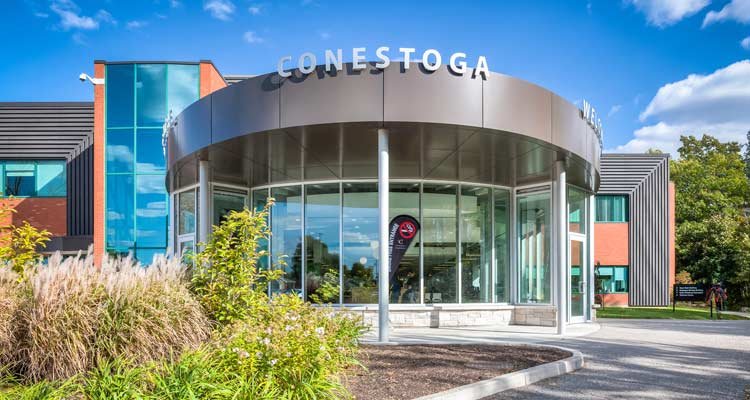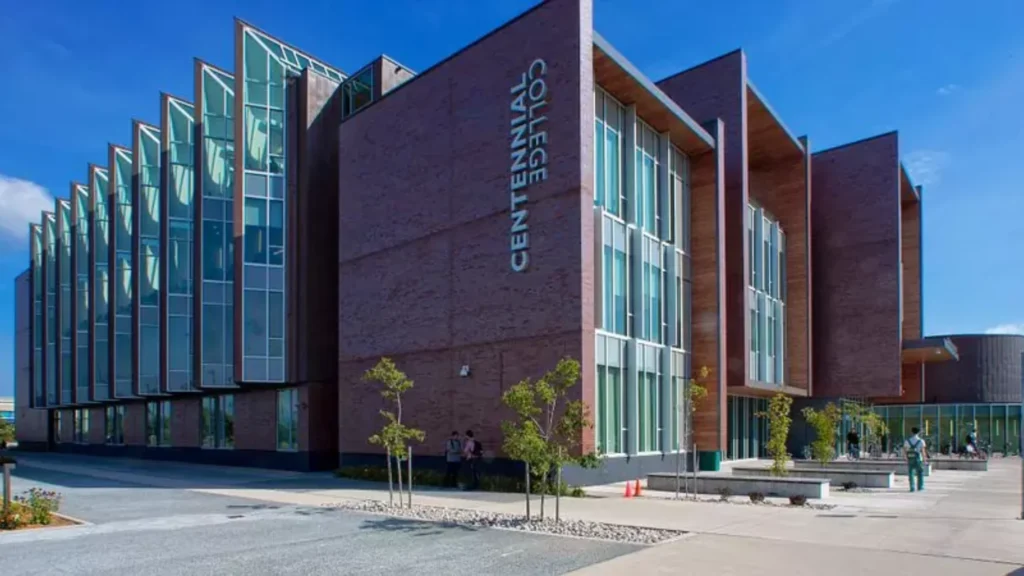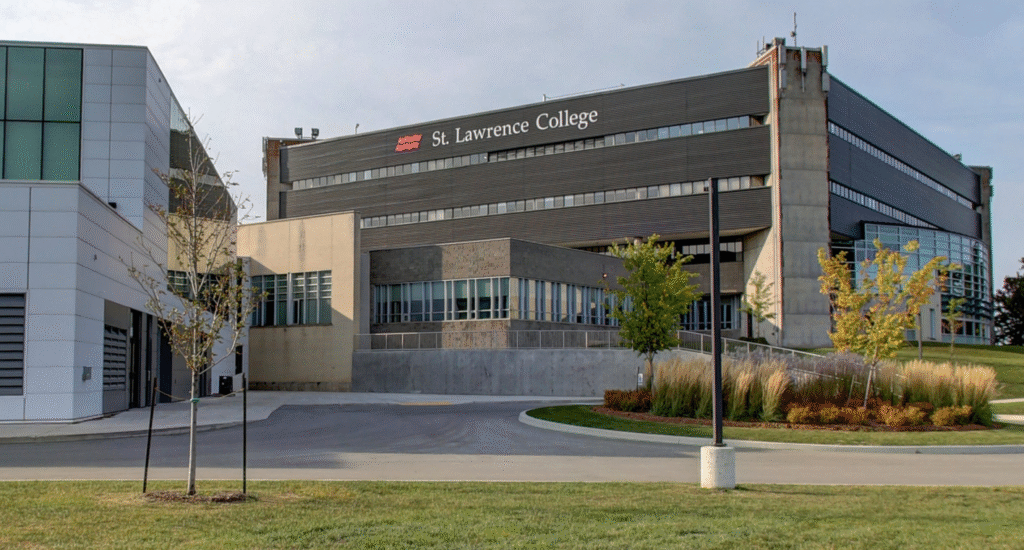If you want a career with good job prospects, competitive earnings, defined avenues for growth and development, and even entrepreneurship, vocational schools in Canada are the ideal option.
Post-secondary trade colleges or technical institutions, sometimes known as vocational schools in Canada, give students the practical skills required in a variety of skilled trades. These colleges assist students learn useful skills and find work in just 1-2 years by offering certificate, diploma, and apprenticeship courses.
Vocational and trade schools offer instruction in a variety of sectors that are essential to today’s society. These schools can help you develop career-specific skills and knowledge for a wide range of occupations, including health care, business, beauty, and skilled trades.
Table of Contents
What is Vocational Training?
Vocational training is typically defined as any instruction tailored to a certain occupation. While an academic degree program at a college or university may prepare you for a variety of entry-level positions in a specific field, such as business or information technology, vocational training is designed to provide you with the defined competencies (and even certification or licensing) needed to pursue a specific position, such as hairstylist, construction electrician, or chef.
Technical or vocational schools in Canada are either public or private institutions that offer career training, apprenticeship programs, and much more. These schools can be defined by the following:
- The majority of training possibilities fall into one of four broad categories: construction, manufacturing, service, and transportation.
- Instructors are often industry-experienced experts with a thorough understanding of the practical skills and theories required to enter the field they teach.
- Programs are designed with a heavy emphasis on career preparedness and typically include extensive hands-on instruction and opportunities to gain real-world experience.
Is Attending Vocational Schools in Canada the Right Choice for Me?
Before choosing one of the many possible vocational occupations, you should consider whether vocational education is the best option for your future.
To help determine the answer, you might want to:
- Talk to current industry professionals to learn about wage expectations, area demand, and other topics.
- Learn about the training you’ll need to achieve your career ambitions, and see if there are any local vocational training programs that can help you with this.
- Get a job in a relevant field. For example, if you wish to be a carpenter, you could work as a carpenter’s helper. If you want to become a chef, you could consider working as a dishwasher or prep cook in a commercial kitchen first.
- If you are still in high school, you could participate in a youth apprenticeship program, which can help you develop useful skills while also providing a glimpse into your potential professional path.
What are the Benefits of Attending Vocational Schools in Canada?
1. Career-oriented education:
Unlike standard college or university programs, vocational or technical school programs can give training focused primarily on building occupation-specific skills and knowledge. Some programs can also equip you to earn Red Seal certification, journeyperson certification, or license specific to your field.
2. Cost-effective training:
Given that vocational programs eliminate the requirement for general education classes, you can benefit from a more condensed education, resulting in reduced expenses and a shorter time commitment.
3. Routinely revised curricula:
Vocational training programs are typically designed with direct input from industry employers in order to generate graduates with the skills and knowledge required to satisfy current work demands. As a result, many vocational schools in Canada regularly review and improve their courses.
4. Job-ready programs:
By choosing vocational schools in Canada over a typical academic route, you may be able to acquire training that is expressly designed to prepare you to graduate and enter the profession right away.
5. Available funding:
Those pursuing technical occupations, particularly vocational schools in Canada, are eligible for a variety of government subsidies and other incentives.
List of Vocational Schools In Canada To Apply
Leading vocational schools in Canada that cater to overseas students offer a wide range of programs with an emphasis on practical, job-related skills.
Here you will find a full review of Canada’s most popular trade schools, including what they offer, course fees, and locations—ideal for local and international students seeking practical education to begin a career.
1. Conestoga College:

Conestoga College is one of Ontario’s fastest-growing colleges and a leader in polytechnic education. Students in Kitchener, Waterloo, Cambridge, Guelph, Stratford, Ingersoll, and Brantford in southern Ontario have access to industry-standard equipment for project-based courses, as well as apprenticeship and co-op possibilities. Conestoga serves almost 4,000 students in 75 co-op programs.
Conestoga prides itself on “technology-enhanced learning,” which connects students to lessons via online programs and mobile devices. This allows students to stay ahead of the curve when entering the ever-expanding digital workforce.
Popular Programs
Conestoga provides almost 70 trade programs. Students can enroll in one advanced diploma program, 11 certificate programs, seven graduate certificate programs, 12 diploma programs, and a whopping 38 college certificate programs. Conestoga provides students with some of the top trades skills available within the same walls, allowing them to observe a variety of skilled crafts in person. The industries covered include construction, motorcycle repair, carpentry, woodworking, and welding.
Conestoga offers one of the province’s major electrical training facilities, and its woodworking and cabinetmaking programs are some of the best in Canada. Also noteworthy is the Women in Skilled Trades General Carpenter Pre-Apprenticeship program, which teaches the skills required to gain an apprenticeship and begin working with industry-standard equipment. Each program ranges in duration from the amount of applied hours required to three-year diploma programs, with an average tuition rate of CAD 16,000.
Related: 15 Best Cosmetology Schools New Jersey
2. British Columbia Institute of Technology (BCIT):

The British Columbia Institute of Technology (BCIT) is one of the province’s largest post-secondary institutions and a major trades training provider. The Burnaby-based institution takes pride in providing real-world technical skills through programs that teach you a trade and prepare you to enter the workforce in as short as six months.
As part of its emphasis on practical, hands-on learning, students have access to highly specialized labs and equipment, ranging from welding and automotive shops to actual aircraft and ships. The emphasis on real-world preparation pays off for students: according to 2023 school statistics, 94 percent of BCIT trades foundation and trades-related vocational graduates found work within four months.
Popular Programs
BCIT’s School of Trades & Apprenticeships offers 129 specialty programs and 154 standalone courses in the transportation, electrical, mechanical, and construction trades, with an average tuition rate of CAD 17,000. The construction industry alone offers 51 full- and part-time programs, including carpentry, house inspection, interior design, ironwork, plumbing, and security systems.
One of its most prominent programs is Trades Discovery for Women, a 16-week full-time program that teaches hands-on skills in 15 different trade disciplines such as plumbing, welding, wiring, and automobile and aircraft wiring systems.
3. Northern Alberta Institute of Technology (NAIT):

The Northern Alberta Institute of Technology is a major producer of trade students and apprentices in Canada. NAIT offers over 50 trades and apprenticeship programs, allowing thousands of students to experience various trades. As Calgary is to SAIT, Edmonton is to NAIT, with three campuses in Alberta’s capital and one in Spruce Grove.
Popular Programs
Diplomas in advanced plumbing, advanced welding, building environmental systems, electrical installation technology, and other subjects are available in one to two years; NAIT has an average tuition of CAD 16,000. Certificates in millwork and carpentry, CNC machinist technician, HVAC technician, and pre-employment auto body repair can be achieved in 15 weeks to a year.
Nearly 30 apprenticeship programs are available, covering topics such as boilermaker, gasfitter, insulator, and welder. Those interested in earning a degree can enroll in NAIT’s Trades to Degrees program, which was one of the first in North America to allow students who have already worked in the trades to supplement their experience with a Bachelor of Business Administration program.
4. Centennial College:

According to Centennial college, if you’ve ever brought your automobile to a mechanic in Canada, there’s a 50 percent chance it was worked on by a Centennial graduate. For the past half-century, the school has tried to create an international presence in nations like as China, India, South Korea, and Brazil in order to reach more foreign students.
Its four campuses in Toronto provide 34,000 full-time and 19,000 part-time students with the skills they need to excel in their fields as soon as they enter the job. Centennial students, whether in Canada or around the world, leave school prepared to succeed.
Popular Programs
Centennial provides apprenticeship programs in a variety of fields, including automobile repair and child and adolescent work. Engineering apprenticeships include electricians, construction maintenance, and refrigeration and air conditioning system mechanics. There are 12 alternatives available for people in the transportation industry, including autobody repair, motorcycle technician, power lift truck technician, and more.
Centennial also provides “modified apprenticeships” that are eight semesters long and more substantial than regular apprenticeships; the average tuition for the college starts at CAD 17,000. The customized options are offered in collaboration with some of the world’s largest auto manufacturers, including Honda, Toyota, Ford, and General Motors.
5. Mohawk College:

Mohawk College in Hamilton, Ontario, has 18 apprenticeship programs, making it one of the top options for vocational schools in Canada. In fact, Mohawk is the province’s largest apprentice trainer, with 2,400 apprenticeship students each year and an average tuition fee of CAD 16,000. The Marshall School of Skilled Trades and Apprenticeship is located at the college’s Stoney Creek campus in eastern Hamilton.
Mohawk’s affiliation with McMaster academic provides students studying automotive engineering technology, automotive and vehicle engineering technology, and biotechnology with a unique opportunity to gain 700 hours of experience in a cutting-edge academic lab.
Popular Programs
The 18 apprenticeship programs provide students opportunities to work in a range of fields, including auto body and collision damage repair, general carpentry, metal fabrication, and welding. Ontario College Certificates can be obtained in ten programs, including construction techniques, gas and oil burner technician, and utilities systems operator.
There are seven diploma programs: construction engineering technician, construction engineering technician and building rehabilitation, electrical engineering technician, general arts and sciences, manufacturing engineering technician, mechanical technician, and motive power technician.
6. Southern Alberta Institute of Technology (SAIT):

The Southern Alberta Institute of Technology, founded in 1916 with 11 registered students, is Calgary’s second oldest post-secondary institution. Since then, the school has developed into one of Canada’s top locations for students wishing to study a skilled manual craft.
More than 250 industry partners help SAIT develop programs that provide students with employer-demanded skills, and with an overall employment rate of 89 percent (which rises to 92 percent for the School of Construction) and an average post-grad salary of just over $59,000, SAIT delivers some of the best-equipped graduates in the country.
Popular Programs
SAIT offers around 80 construction, trades, and apprenticeship programs organized and administered by the School of Construction, with an average tuition of approximately CAD 16,000. Certificates in pre-employment carpentry, pre-employment pipe trades, and pre-employment refrigeration and air conditioning are earned in the classroom over the course of 12 weeks.
Diplomas in civil engineering technology, architectural technologies, and geomatics engineering technology can all be completed in two years. A popular bachelor’s degree in the science of construction project management is also offered. Students are also interested in apprenticeship opportunities in fields such as welding, sheet metal work, roofing, glazing, and bricklaying.
7. Humber College:

Humber College is one of the largest vocational schools in Canada, graduating over 14,000 students annually from 200+ full-time programs, with a starting average tuition of CAD 18,000. The school provides over 20 skilled trades and apprenticeship programs, the majority of which are held at the north campus in Etobicoke, Ontario.
Popular Programs
Humber’s trade school program includes eight-semester degrees in three areas: engineering, industrial design, and interior design. Certificates of completion in programs such as aboriculture, cabinet making, and horticultural technology can be obtained in as little as twelve weeks or three semesters.
Advanced diplomas in construction engineering technology and HVAC technology are obtained over six semesters. Diploma programs that can be completed in three or four semesters include building construction technician, industrial woodworking technician, and more.
8. Fanshawe College:

Fanshawe is one of Ontario’s largest schools, with over 220 programs (including over 60 co-op programs, the most of any Canadian institution) distributed across numerous campuses in London, St. Thomas, Simcoe, and Woodstock. Over 40 of these programs are in skilled trades and apprenticeships, with delivery modalities ranging from full-time in-person to online, and the average cost of tuition ranges from CAD 16,000.
Popular Programs
Fanshawe offers apprenticeship programs in general carpentry, plumbing, residential air conditioning systems mechanic, sheet metal worker, general machinist, industrial electrician, industrial mechanic, and tool and die maker.
There are additional certificates available for carpentry and renovation, electrical methods, and welding. There are also diplomas available in manufacturing engineering, electrical engineering, mechanical engineering, renewable energy, and carpentry and remodeling.
9. St. Lawrence College:

St. Lawrence College offers trade programs at all three of its Ontario campuses: Kingston, Brockville, and Cornwall. It can be counted as one of the largest sole vocational schools in Canada. St. Lawrence’s diverse course offerings ensure that all students may find and thrive in their chosen field, with the institution offering “fast track” delivery certificates that take one year to full-fledged four-year degrees.
Popular Programs
St. Lawrence College provides apprenticeship programs in industrial electrician, industrial mechanic, plumber, electrician for construction and maintenance, and welding. Diplomas in hairstyling, mechanical technician, motive power technician, welding and fabrication technician, esthetician, and electrical engineering technician can be completed in 49 weeks to two years.
Additionally, an Ontario College Certificate in general building carpentry methods can be obtained in a single year, while paying an average tuition of CAD 17,000.
10. Sheridan College:

Sheridan College expanded from a school of only 400 students in the 1960s to one of Ontario’s largest schools by providing students with unprecedented insight into what it takes to succeed in any discipline. Sheridan provides seven trades programs at its Davis campus in Brampton, Ontario. Rather than providing students with co-ops and apprenticeships while in school, Sheridan’s courses prepare students for the next stages they can pursue on their own after earning a certificate or diploma.
Popular Programs
Sheridan College offers diplomas in environmental technician, plumbing technician, and mechanical technician – CNC and precision machining, as well as certifications in advanced manufacturing management, electrical techniques, and mechanical techniques – CNC and precision machining. Sheridan also offers an honours bachelor’s degree in electrical engineering.
FAQs
Do vocational schools in Canada admit international students?
Yes, vocational schools in Canada accept international students. Numerous Canadian organizations provide vocational programs and skilled crafts, which appeal to international students seeking specialized training and employment opportunities.
What is the average duration of programs in vocational schools in Canada?
Vocational schools in Canada have programs that typically last one to four years. Numerous programs, particularly those focused on practical skills, can be completed in one or two years. Certain programs, such as apprenticeship training, might last four years and combine practical training with classroom instruction.
What do you need to learn at vocational schools in Canada?
The primary requirements for admission to vocational schools in Canada include completing secondary education, being able to speak English (an IELTS score of 6.0 to 6.5 is normal), and providing your passport and proof of financial means. Individual conditions used by a program or organization may vary from one location to another.
Conclusion
Now that we’ve answered some of the most common questions regarding pursuing a vocational education, you might be ready to take the next step in your path. Begin by looking for vocational schools in Canada and programs that are a good fit for you today!

